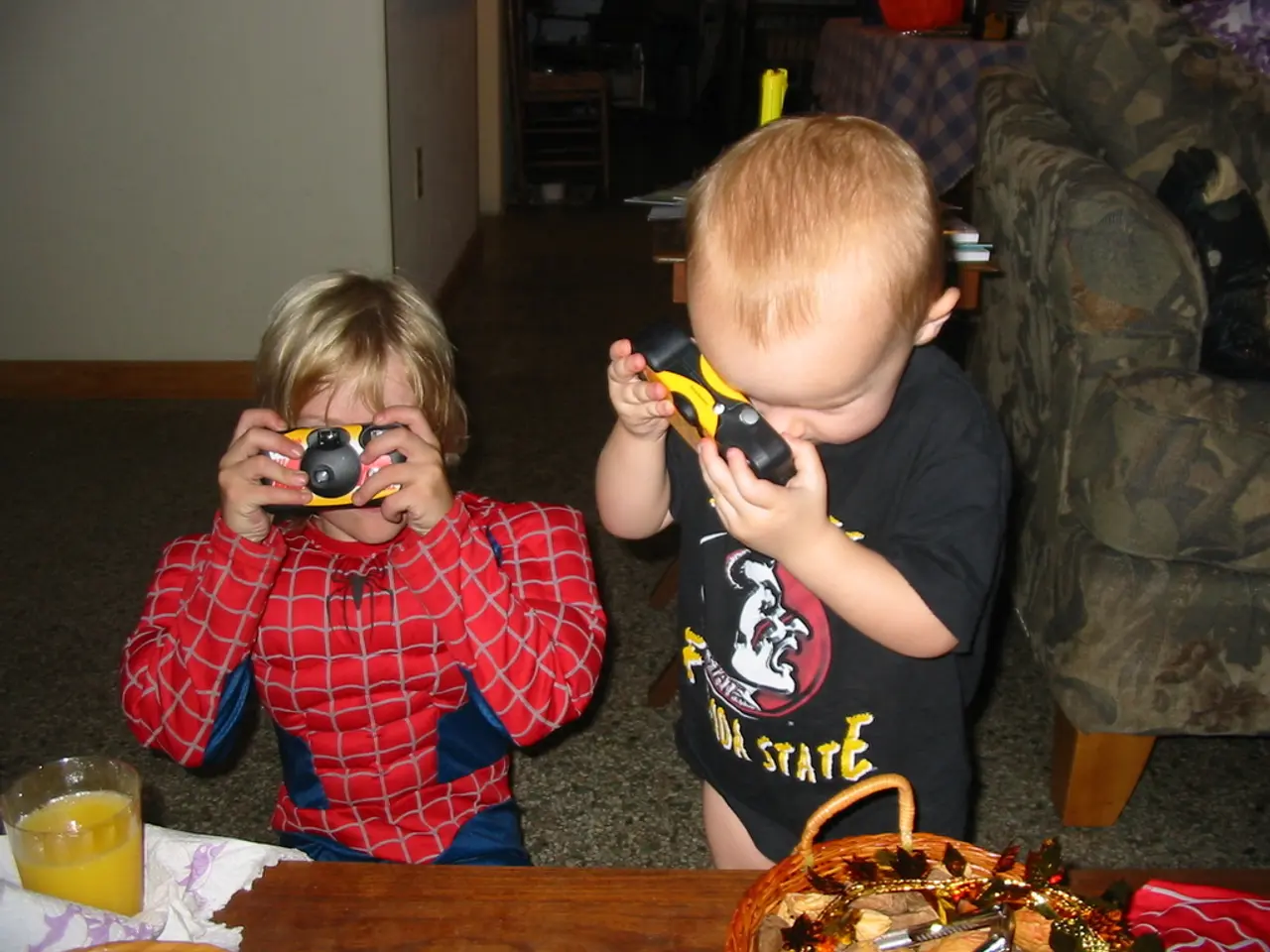Arms and Armament: The Reality and Misconceptions Explored
In the realm of horror cinema, "Weapons" by Zach Cregger stands out as a film that leaves a lasting impression on viewers, with its images burrowing deep into the psyche. The movie, much like its title, carries multiple hidden meanings and interpretations, intentionally left ambiguous by the director to provoke personal reflection rather than offer a single "correct" explanation.
"Weapons" opens in the aftermath of the disappearance of 17 children in the city of Maybrook, setting the stage for a chilling mystery. As the story unfolds, it becomes clear that the truth is more disturbing and out of left field than expected, involving the children being held captive by a witch named Gladys.
One of the key themes in "Weapons" is the weaponization of people and trauma. The title and symbolism suggest how people become "weapons" through the rage and pain they carry. These weapons can be literal (guns) or figurative—how communities, substances, and histories are used destructively against others or oneself. This connects to how characters in the film weaponize their emotions and actions, leading to pain and destruction.
Cregger deliberately created certain scenes, such as the mysterious floating gun, to be open-ended. He does not assign a strict political meaning or single explanation but encourages viewers to bring their own experiences and ideas to the film's symbols.
The story is deeply rooted in grief and trauma, reflecting a grieving process Cregger experienced personally. The disappearance of 17 children at exactly 2:17 a.m. holds symbolic significance but is open to multiple theories. One interpretation ties the numbers 2 and 17 to the surviving teacher and student versus the missing children, as well as a nod to room 217 in "The Shining," symbolizing horror and mystery.
"Weapons" also explores religious and parasitic metaphors. Characters like Paul and James become "apostles" of a controlling parasite-like figure, Glattis, symbolizing how people can be manipulated and turned into weapons by external forces, such as addiction or control. The parasite motif is visually supported by classroom lessons on tapeworms and symbolizes internal suffering and victimization.
Names like Archer reinforce themes of targeting and violence, with foreshadowing of darker characters and events through symbolism such as painting targets or labeling people as witches, showing societal scapegoating and witch hunts in emotional contexts.
As the plot thickens, characters like Alex, Justine, and Asher delve deeper into the mystery, each uncovering pieces of the puzzle that lead to shocking revelations. Alex acquiesces, believing it could make Gladys go away and return his life to normal, but normalcy is never an option in the film. Justine, a teacher and scapegoat in the film, becomes a full-fledged alcoholic who becomes obsessed with Alex Lily, the only child who remained. Asher, the father of one of the missing children, conducts his own investigation and analyzes his Ring camera footage.
The film "Weapons" is compared to "The Shining" in terms of its rich subtext and the ability to take away various meanings from it. While "The Shining," directed by Stanley Kubrick, is about a writer who serves as a winter caretaker at a remote hotel and goes insane, "Weapons" offers a unique exploration of trauma, anger, and the metaphorical use of "weapons" in human relationships and psychological states.
For a taste of various interpretations of "Weapons," readers can find the article on Letterboxd. However, it's important to note that, like any work of art, the meaning of "Weapons" may vary from viewer to viewer, making it a film that resonates differently with each person who watches it.
[1] "Weapons" - A New Horror Masterpiece that Resonates with Personal Fears. (n.d.). Retrieved from https://letterboxd.com/film/weapons/ [2] Kohn, E. (2022, April 28). Review: 'Weapons' Is a Horror Movie About the Weaponization of People and Trauma. IndieWire. Retrieved from https://www.indiewire.com/2022/04/weapons-review-zach-creggers-horror-movie-1234741288/ [3] Kohn, E. (2022, April 21). 'Weapons' Review: Zach Cregger's Horror Movie Is a Gripping, Personal Story. IndieWire. Retrieved from https://www.indiewire.com/2022/04/weapons-review-zach-creggers-horror-movie-1234678009/ [4] Ehrlich, J. (2022, April 21). 'Weapons' Review: Zach Cregger's Horror Movie Is a Gripping, Personal Story. NPR. Retrieved from https://www.npr.org/2022/04/21/1094575034/weapons-review-zach-creggers-horror-movie [5] Schneider, M. (2022, April 19). 'Weapons' Review: Zach Cregger's Horror Movie Is a Gripping, Personal Story. Collider. Retrieved from https://collider.com/weapons-movie-review/
- Movie fans and critics have drawn comparisons between the narrative style of "Weapons" and the classic fiction-horror blend of Stanley Kubrick's "The Shining," highlighting the rich subtext and personal interpretations present in both films.
- The fashion of "Weapons" is heavily influenced by the '80s, with the cultural setting serving as a backdrop for the exploration of themes such as the weaponization of people and trauma, symbolizing how societal norms can be used destructively against individuals or communities.
- When discussing the entertainment value of "Weapons," it is essential to consider the impact of the film's musical score, which borrows elements from traditional folk tunes, contributing significantly to the narrative's unsettling atmosphere while offering a distinct, unique manual-like style of storytelling.







